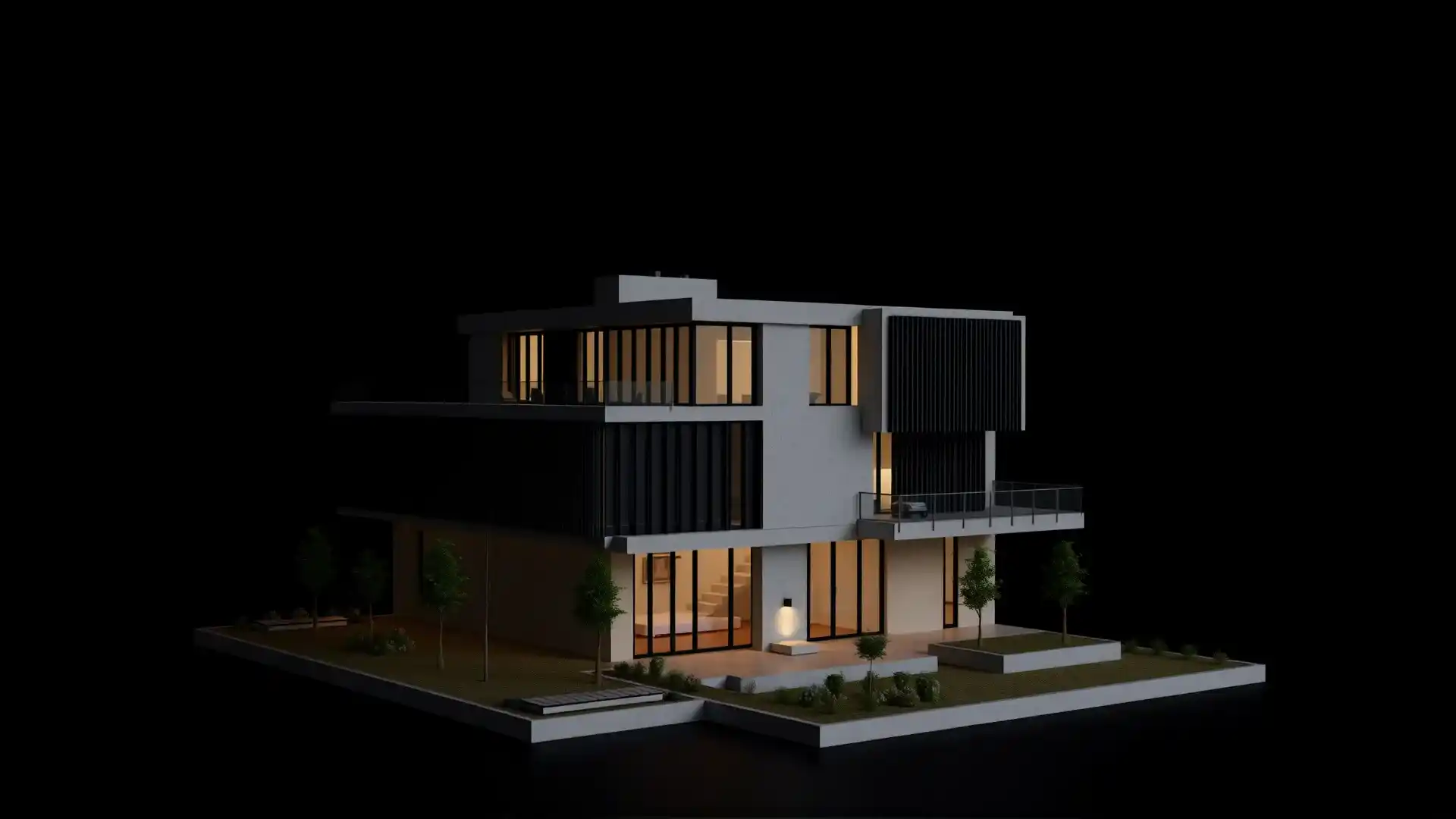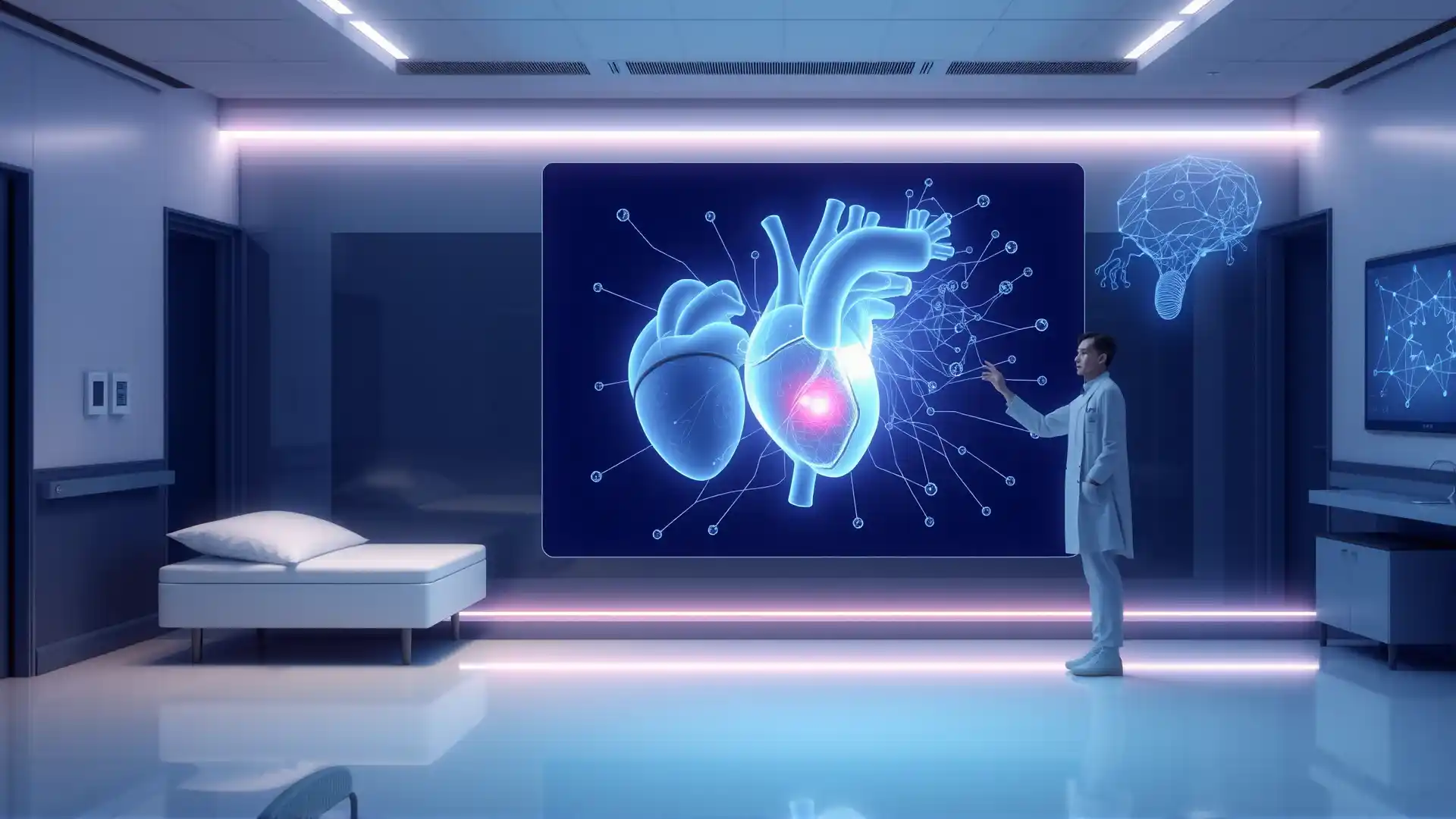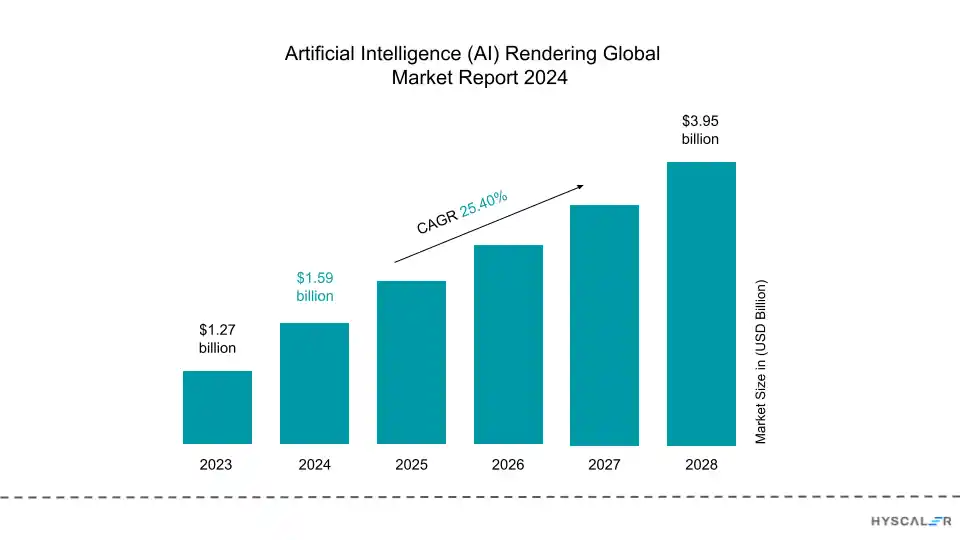Table of Contents
Artificial Intelligence is transforming how we visualize and create content, with AI rendering standing out as a significant innovation. Whether in architecture, gaming, product design, or marketing, AI rendering is changing industries by providing quicker, more realistic, and cost-effective visualizations.
This article explores the transformative impact of AI rendering, its various applications, advantages, challenges, and future possibilities.
1. What is AI Rendering?
AI rendering denotes using artificial intelligence technologies to optimize, enhance, and speed up the creation of quality imagery from 3D models. Unlike traditional rendering systems, which rely heavily on manual adjustments and vast computational resources, AI tools use machine learning algorithms to analyze a vast amount of training data to recognize patterns, simulate realistic lighting conditions, boost textures, and make tedious tasks more automatic.
With these advances in technology, it allows a creator to cook up and deliver stunning visuals at an exponentially faster rate and thus reduces time and effort for time-intensive rendering processes.
A major breakthrough in this technology is its ability to replicate real-world lighting and shadow dynamics with incredible precision. Instead of relying on extensive trial-and-error, these systems analyze scene data to produce lighting conditions that closely mimic natural environments, delivering unparalleled realism.
Similarly, automated texture refinement ensures that surfaces and materials appear lifelike, making this technology invaluable across industries like gaming, animation, and architectural visualization.
2. Key Features of AI Rendering
- Speed: AI dramatically reduces rendering times from hours or days to minutes.
- Realism: Neural networks analyze vast datasets to produce photorealistic visuals.
- Efficiency: Reduces computational demands while maintaining high-quality outputs.
- Automation: Simplifies tasks like lighting adjustments and texture mapping.
3. Essential Building Blocks of AI Rendering
- Neural Networks: Deep learning models, like Generative Adversarial Networks (GANs), improve the realism of generated images by studying extensive datasets that include real-world textures and lighting conditions.
- Ray Tracing: AI-powered ray tracing algorithms simulate light interactions with surfaces more accurately, creating lifelike reflections, refractions, and shadows.
- Automation: AI simplifies complex rendering workflows, reducing the need for manual adjustments and repetitive tasks.
- Optimization: Intelligent resource allocation ensures rendering is performed efficiently, even on systems with limited hardware capabilities.
4. The Growing Importance of Advanced Rendering
The integration of AI into rendering processes addresses critical challenges in industries that rely heavily on visualization. Its impact is profound for professionals in architecture, animation, gaming, and beyond.
- Incredibly Fast Rendering: Rendering may take hours or even days in the event of complex calculations in conventional rendering processes. AI programs, such as NVIDIA’s OptiX AI denoiser, can reduce these times drastically. The speed means shorter production cycles and quicker project delivery.
- Greater Realism: AI does a wonderful job of producing true-to-life visuals via simulating natural lighting, shadows, textures, and atmospheric effects such as fog or rain-all of these additions are better able to conform to the expectations of the stakeholders.
- Economy: AI in rendering processes save studios and companies on expensive hardware and intense labor. With cloud-based solutions, they further democratize the ability of any company to tap into advanced rendering.
- Scalability: Given that it is integrated with the cloud, even small teams can undertake, apply, and deliver larger projects efficiently. The AI platform provides seamless collaboration with multiple iterations in quick succession.
5. Industries Benefited by AI Rendering
Architecture and Real Estate

AI in rendering has changed architectural visualization and actively assists architects and designers in depicting their projects in photorealistic models. Some of the prominent advantages include:
- Enhanced Design Visuals: Clients may take immersive walkthroughs into their properties even before they are built.
- Speedy Iterations: AI tools allow architects to change designs in record time following client feedback, cutting the time spent on revisions.
- Cost Reductions: The expense of a project is lowered by reduced dependency on physical models and massive rendering farms.
- Improved Material and Lighting Accuracy: AI assists in generating precise materials, textures, and light behavior that closely match real-world conditions. For studios like Fortes.vision, this means cleaner previews from the start and fewer revisions needed during the production phase.
According to a report, the architectural visualization market is projected to grow from $1.7 billion in 2022 to $4.5 billion by 2027, driven largely by advancements in AI.
Entertainment and Media
The entertainment industry has embraced AI to create stunning visual effects (VFX) and animations.
- Real-Time Rendering: AI enables creators to produce VFX in real-time, a critical advantage in gaming and live broadcasting.
- Hyper-Realistic Characters: AI-generated textures and expressions bring characters to life like never before.
- Streamlined Post-Production: Automated rendering tools significantly reduce the time required for editing and special effects.
The global VFX market is expected to reach $26.1 billion by 2026, with AI technologies playing a pivotal role in this growth.
Automotive and Manufacturing
In automotive design, AI rendering helps in creating realistic prototypes and simulations.
- Virtual Prototyping: Engineers can evaluate designs in virtual environments, identifying flaws without physical prototypes.
- Marketing Visualization: AI-generated renders showcase vehicles with customizable options, enhancing customer engagement.
- Streamlined Production: Simulations help manufacturers optimize assembly lines and reduce production errors.
Healthcare and Medical Imaging

AI rendering supports advanced medical imaging and surgical planning.
- 3D Modeling: AI-powered visualization aids in creating detailed anatomical models for educational and surgical purposes.
- Precision: High-quality renders improve diagnostic accuracy and treatment planning.
Product Design
AI rendering has become a transformative tool for product design, enhancing creativity, efficiency, and precision.
- Realistic Prototyping: Real-time rendering visualizes prototypes with photorealistic textures, materials, and lighting, enabling designers and clients to see how a product would perform and how it would look in real life.
- Performance Simulation: AI can render products under realistic conditions such as stress, wear, and environmental conditions to assess how a product will perform before it’s ever manufactured.
- Improved Teamwork: Rendered visuals can be easily shared among teams for lightweight collaboration to happen amongst the designer, engineers, and stakeholders.
According to a survey by Statista, 78% of product designers report that AI rendered visuals help in securing faster client approvals due to their realistic representation of final products.
6. Benefits of AI Rendering
- Speed & Efficiency: Advanced rendering greatly shortens rendering time such as project completion. Traditional processes formerly taking hours or days can now be completed in minutes. Example: Nvidia’s Deep Learning Super Sampling uses artificial intelligence to perform real-time upscaling of graphics, highly speeding up the rendering process in games and simulations.
- Realism That Knows No Limits: By realistically simulating lighting, textures, and environmental demands, this method generates excellently photorealistic results, enriching the viewer experience and enhancing decision-making processes in fields like real estate and product design.
- Cost Savings: Automating labor-intensive tasks and reducing hardware requirements is what advanced rendering does. This is effectively clipping operational costs down by avoiding the necessity for expensive render farms and high-end workstations.
- Creative Release: Creative professionals are free to focus on innovation rather than on repetitive work. Artists, architects, and designers are free to explore ideas and test designs without being bound down by technical obstacles.
- Access to All: Focus on high-quality visualization reporting for smaller studios and independent creators. Cloud-based solutions remove barriers to entry even further, eliminating the normal requirement for extensive setups of workstations.
7. Challenges in Rendering with AI
While this technology offers numerous advantages, it also faces challenges:
- Data Dependency: High-quality results require extensive datasets for training, which can be resource-intensive to obtain.
- Hardware Limitations: Despite optimization, rendering complex scenes still demands significant computational power.
- Learning Curve: Adopting new tools may require professionals to learn new software and workflows.
8. Future of Rendering Technologies

The future of AI rendering is bright, with continuous advancements promising even more capabilities:
- Real-Time Collaboration: Teams will be able to collaborate on projects in real-time, with AI rendering in the background.
- Integration with AR/VR: Rendering will play a crucial role in creating immersive augmented and virtual reality experiences.
- Smarter Models: Continuous improvements in machine learning algorithms will lead to more efficient and realistic rendering techniques.
- Sustainability: Efficiency can help reduce the environmental impact of energy-intensive processes.
9. Why Choose Us For AI Rendering Solutions?
We are at the forefront of rendering technology. Here’s why our solutions stand out:
- Cutting-Edge Technology: We leverage the latest algorithms to deliver unparalleled realism and efficiency.
- Tailored Solutions: Our tools are customizable to meet the unique needs of the industry.
- Scalability: Whether you’re an independent creator or a large enterprise, our solutions are designed to grow with your needs.
- Dedicated Support: Our team of experts is here to guide you every step of the way, ensuring you get the most out of our technology.
10. Conclusion
Cutting-edge rendering techniques represent more than just a leap forward in technology—they are redefining how industries envision and bring ideas to life. By integrating these advanced methods, creators and businesses gain access to unprecedented levels of precision, speed, and innovation. From crafting lifelike designs to streamlining workflows, the potential applications are vast and impactful.
As this technology is touted for wider adoption through burdens such as real-time rendering and generative design, it is said that those businesses which would embrace AI rendering today would find themselves in a position to thrive in this visual-driven world, where speed, quality of output, and degree of innovation stand to define success in the market.
Are you ready to transform your rendering? Get in touch for conversations around advancing your projects to even higher heights.